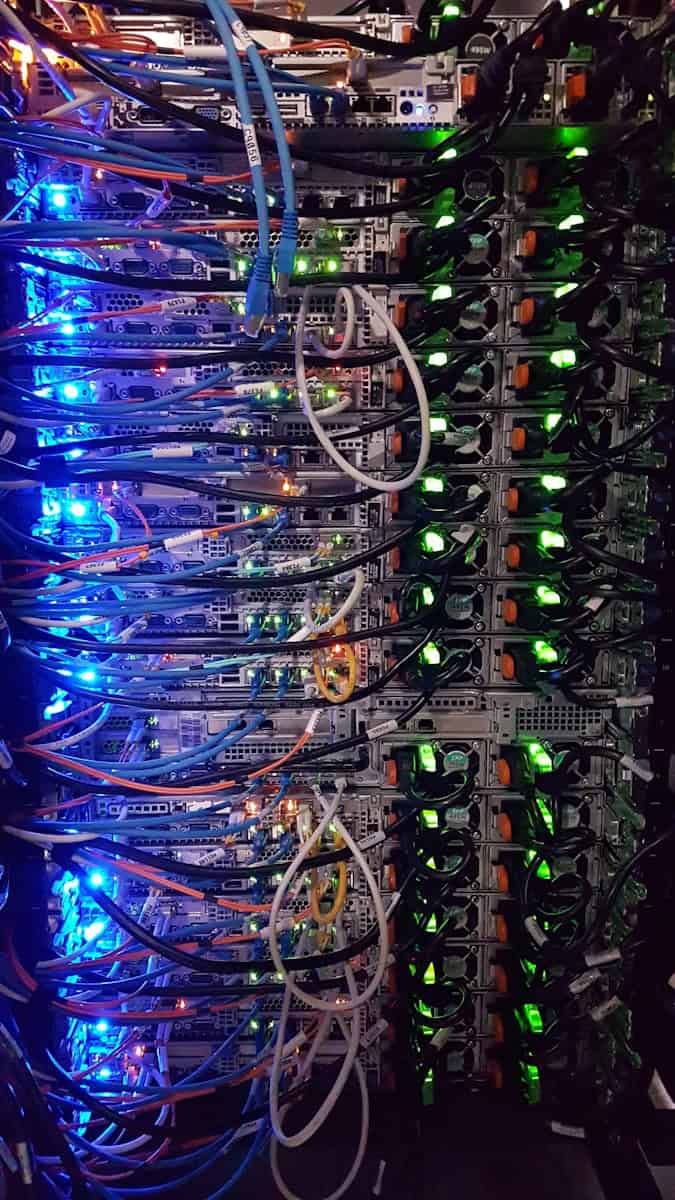The internet is a global network that connects millions of computers worldwide, allowing users to share and access information seamlessly. At its core, the Internet is simply a series of connections between electronic devices, made possible by a structured set of protocols. These protocols work together to ensure data sent across this network reaches the right destination.
The backbone of how the Internet operates is the transmission of data through packets. When information is sent over the Internet, it’s broken down into small chunks called packets. These packets navigate through a web of routers and switches, relying on Internet Protocol (IP) addresses to find the correct route. Transmission Control Protocol (TCP) plays a crucial role in ensuring these packets arrive safely, verifying the successful delivery of data and resending any pieces that get lost along the way.
Servers are another key component that keeps the Internet running. They store and deliver the content we request, such as websites, videos, and emails. When you type in a website address, your computer communicates with a server to fetch the webpage and display it on your screen. This interaction is part of a vast system of hardware and software that work in harmony to provide the functionality we’ve come to rely on daily.

A Simplified Explanation of the Internet’s Inner Workings
The internet is a vast network of interconnected computers and servers that communicate with each other using standardized protocols. These protocols establish the rules for how data is transmitted, formatted, and received.
The Role of Internet Protocols
The Internet Protocol (IP)
IP is responsible for addressing and routing data packets across the network. Each device connected to the internet has a unique IP address, which acts as its identifier. When you send data, it’s broken down into smaller packets, each with its source and destination IP addresses. These packets travel through various routers, which use the destination IP address to determine the best path for the packet to reach its intended recipient.
The Transmission Control Protocol (TCP)
TCP ensures reliable data transmission. It breaks down data into packets, orders them correctly upon arrival, and requests retransmission of any lost packets. This ensures that the data you send arrives intact and in the right order.
The Hypertext Transfer Protocol (HTTP)
HTTP is the protocol used for accessing websites. When you type a website address into your browser, it sends an HTTP request to the server hosting that website. The server then sends an HTTP response containing the website’s content, which your browser renders into the web page you see.
The Physical Infrastructure of the Internet
Cables and Fibers
The internet relies on a vast network of cables and fiber optic lines that span the globe. These cables transmit data as electrical or light signals. Submarine cables connect continents, while terrestrial cables link cities and countries.
Routers and Switches
Routers and switches are essential components of the internet’s infrastructure. Routers direct data packets between networks, while switches connect devices within a local network.
Data Centers
Data centers house servers that store websites, applications, and other data. These servers are connected to the internet and respond to requests from users.
The Domain Name System (DNS)
DNS translates human-readable domain names (like “www.example.com“) into IP addresses. This makes it easier for users to access websites without having to remember complex numerical addresses.
How It Works
When you enter a domain name into your browser, it sends a DNS query to a DNS server. The DNS server looks up the IP address associated with that domain name and sends it back to your browser. Your browser then uses that IP address to connect to the website’s server.
Summary of How the Internet Works
| Step | Description |
|---|---|
| 1. | You enter a website address into your browser. |
| 2. | Your browser sends a DNS query to find the website’s IP address. |
| 3. | Your browser sends an HTTP request to the website’s server. |
| 4. | The server sends an HTTP response containing the website’s content. |
| 5. | Your browser renders the content into a web page. |
The internet is a complex system, but understanding the basic principles of how it works can help you appreciate its vastness and interconnectedness.
Key Takeaways
- The Internet connects computers globally, relying on protocols to communicate.
- Data is transmitted in packets that find their destination via IP addresses, with TCP ensuring reliable delivery.
- Servers are pivotal, storing and supplying the content we access on the Internet.
Foundations of Internet Technology
The internet works by connecting a global network of computers using a variety of technologies and protocols to communicate and transfer data.
Basic Concepts and Infrastructure
The internet is a vast network of computers linked by a complex infrastructure. This infrastructure consists of wires, cables, and wireless connections. Fiber-optic cables carry data at high speeds across continents and oceans. Meanwhile, routers serve as the middlemen, directing traffic to ensure information finds the correct path. A router connects networks and directs packets, units of data, to their destinations. Every device on the internet has an Internet Protocol (IP) address, a unique identifier that allows computers to locate one another.
Protocols and Communication
Communication over the internet hinges on a set of rules or protocols. These include Transmission Control Protocol (TCP) and Internet Protocol (IP), often referred to collectively as TCP/IP. TCP ensures data sent from one computer reaches another reliably and in order, while IP directs the packets of data to the correct addresses. Hypertext Transfer Protocol (HTTP) is used for transferring web pages. Protocols ensure effective data exchange, regardless of differing hardware and systems.
Core Internet Entities and Functions
Key entities of the internet include servers, which host information, and clients, like a user’s computer or smartphone, that access information. The Domain Name System (DNS) translates human-friendly domain names into IP addresses, guiding users to the right servers. Data encryption keeps data secured during transmission. Internet Service Providers (ISPs) supply the connectivity, allowing users to access the web, while modems and switches support home and office networks. Bandwidth, the volume of information per unit of time that a transmission medium can handle, is crucial for determining how much data can flow through the network.







